The association of adelmidrol with sodium hyaluronate displays beneficial properties against bladder changes following spinal cord injury in mice
- PMID: 30653511
- PMCID: PMC6336272
- DOI: 10.1371/journal.pone.0208730
The association of adelmidrol with sodium hyaluronate displays beneficial properties against bladder changes following spinal cord injury in mice
Abstract
The disruption of coordinated control between the brain, spinal cord and peripheral nervous system caused by spinal cord injury (SCI) leads to several secondary pathological conditions, including lower urinary tract dysfunction. In fact, urinary tract dysfunction associated with SCI is urinary dysfunction could be a consequence of a lack of neuroregeneration of supraspinal pathways that control bladder function. The object of the current research was to explore the effects of adelmidrol + sodium hyaluronate, on bladder damage generated after SCI in mice. Spinal cord was exposed via laminectomy, and SCI was induced by extradural compression at T6 to T7 level, by an aneurysm clip with a closing force of 24 g. Mice were treated intravesically with adelmidrol + sodium hyaluronate daily for 48 h and 7 days after SCI. Adelmidrol + sodium hyaluronate reduced significantly mast cell degranulation and down-regulated the nuclear factor-κB pathway in the bladder after SCI both at 48 h and 7days. Moreover, adelmidrol + sodium hyaluronate reduced nerve growth factor expression, suggesting an association between neurotrophins and bladder pressure. At 7 days after SCI, the bladder was characterized by a marked bacterial infection and proteinuria; surprisingly, adelmidrol + sodium hyaluronate reduced significantly both parameters. These data show the protective roles of adelmidrol + sodium hyaluronate on bladder following SCI, highlighting a potential therapeutic target for the reduction of bladder changes.
Conflict of interest statement
The authors have read the journal's policy and have the following conflicts: Salvatore Cuzzocrea is co-inventor on patent WO2013/121449 A8 (Epitech Group SpA). Moreover, Dr Cuzzocrea is also a co-inventor with Epitech group on the following patents: EP 2814489, EP 2821083, EP 2985037, 102015000067344. No other authors have conflict of interests. This does not alter our adherence to all the PLOS ONE policies on sharing data and materials.
Figures
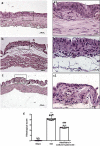
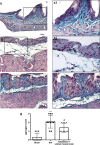
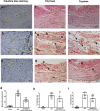
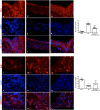
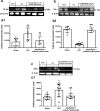
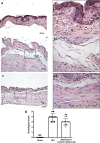
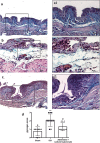
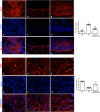
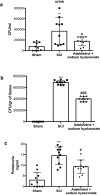
Similar articles
-
Adelmidrol + sodium hyaluronate in IC/BPS or conditions associated to chronic urothelial inflammation. A translational study.Pharmacol Res. 2018 Aug;134:16-30. doi: 10.1016/j.phrs.2018.05.013. Epub 2018 May 22. Pharmacol Res. 2018. PMID: 29800607
-
Nerve growth factor-dependent hyperexcitability of capsaicin-sensitive bladder afferent neurones in mice with spinal cord injury.Exp Physiol. 2018 Jun;103(6):896-904. doi: 10.1113/EP086951. Epub 2018 Apr 24. Exp Physiol. 2018. PMID: 29603450 Free PMC article.
-
Adelmidrol, in combination with hyaluronic acid, displays increased anti-inflammatory and analgesic effects against monosodium iodoacetate-induced osteoarthritis in rats.Arthritis Res Ther. 2016 Dec 12;18(1):291. doi: 10.1186/s13075-016-1189-5. Arthritis Res Ther. 2016. PMID: 27955699 Free PMC article.
-
Bladder afferent pathway and spinal cord injury: possible mechanisms inducing hyperreflexia of the urinary bladder.Prog Neurobiol. 1999 Apr;57(6):583-606. doi: 10.1016/s0301-0082(98)00070-7. Prog Neurobiol. 1999. PMID: 10221783 Review.
-
Mechanisms underlying the recovery of lower urinary tract function following spinal cord injury.Prog Brain Res. 2006;152:59-84. doi: 10.1016/S0079-6123(05)52005-3. Prog Brain Res. 2006. PMID: 16198694 Review.
Cited by
-
Protective effects of Colomast®, A New Formulation of Adelmidrol and Sodium Hyaluronate, in A Mouse Model of Acute Restraint Stress.Int J Mol Sci. 2020 Oct 30;21(21):8136. doi: 10.3390/ijms21218136. Int J Mol Sci. 2020. PMID: 33143356 Free PMC article.
-
Efficacy of a Product Containing Xyloglucan and Pea Protein on Intestinal Barrier Function in a Partial Restraint Stress Animal Model.Int J Mol Sci. 2022 Feb 18;23(4):2269. doi: 10.3390/ijms23042269. Int J Mol Sci. 2022. PMID: 35216383 Free PMC article.
-
Hidrox® and Chronic Cystitis: Biochemical Evaluation of Inflammation, Oxidative Stress, and Pain.Antioxidants (Basel). 2021 Jun 29;10(7):1046. doi: 10.3390/antiox10071046. Antioxidants (Basel). 2021. PMID: 34209690 Free PMC article.
-
Aerosol-Administered Adelmidrol Attenuates Lung Inflammation in a Murine Model of Acute Lung Injury.Biomolecules. 2022 Sep 16;12(9):1308. doi: 10.3390/biom12091308. Biomolecules. 2022. PMID: 36139146 Free PMC article.
-
Beneficial effect of KYP-2047, a propyl-oligopeptidase inhibitor, on oral squamous cell carcinoma.Oncotarget. 2021 Dec 7;12(25):2459-2473. doi: 10.18632/oncotarget.28147. eCollection 2021 Dec 7. Oncotarget. 2021. PMID: 34917264 Free PMC article.
References
-
- Ambrozaitis K, Kontautas E, Spakauskas B, Vaitkaitis D. Pathophysiology of acute spinal cord injury. Medicina (Kaunas, Lithuania). 2005;42(3):255–61. - PubMed
MeSH terms
Substances
LinkOut - more resources
Full Text Sources
Medical

